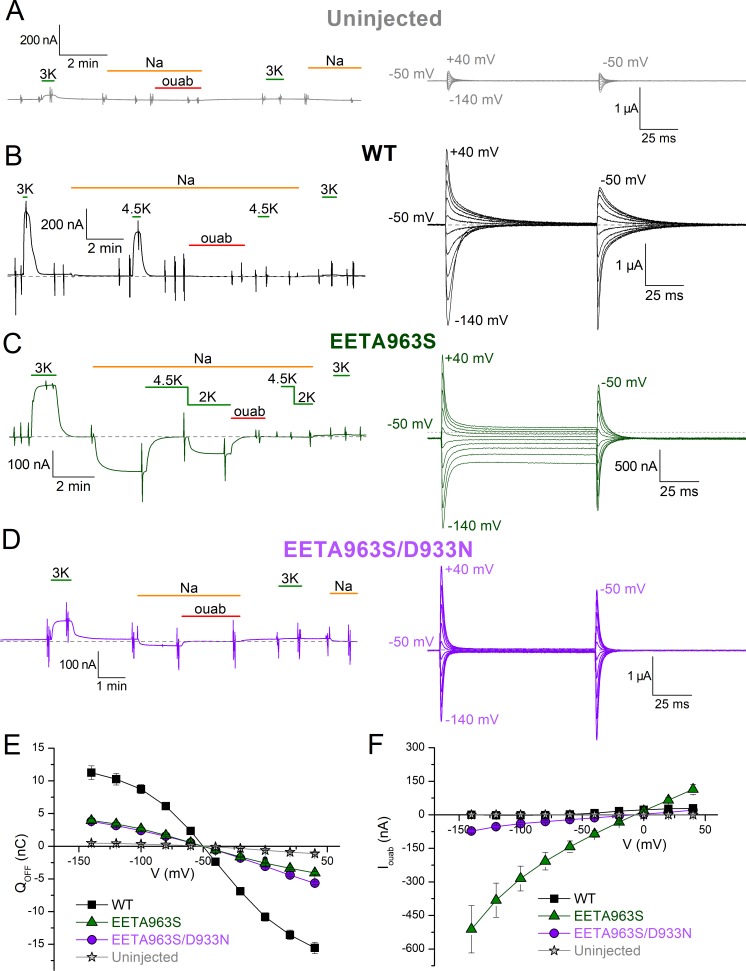Figure 4.
Wild-type, EETA963S, and EETA963/D933N human pumps. (A–D) Representative current recordings from Na+o-loaded oocytes that were uninjected (A) or injected with human Na/K pump cRNA encoding wild type (B), EETA963S (C), or EETA963S/D933N (D). Left traces show a continuous recording illustrating the effect of several experimental maneuvers on holding current at −50 mV. In all four cases, initial application of K+ in NMG+o activated outward current. Substitution of NMG+o with Na+o induced inward current only in EETA963S. For wild type and EETA963S, 4.5 mM K+ applied in Na+ activated a large outward current. Note that after a 2-min application of 1 mM ouabain, there is no response to subsequent application of K+ in all cases, and that the inward current through EETA963S is irreversibly blocked. Right traces show ouabain-sensitive currents measured in Na+o in the same oocytes shown on the left, evoked by application of 100-ms-long pulses to voltages between −140 and 40 mV in 20-mV increments. Gray dashed lines indicate zero-current level. (E) Mean Q-V curves from uninjected (stars, n = 7), wild-type–injected (squares, n = 5), EETA963S-injected (up triangle, n = 4), and EETA963S/D933N-injected (circles, n = 5) oocytes. (F) Mean ouabain-sensitive, steady-state currents in Na+o for same conditions and oocytes in E. Error bars represent SEM.

